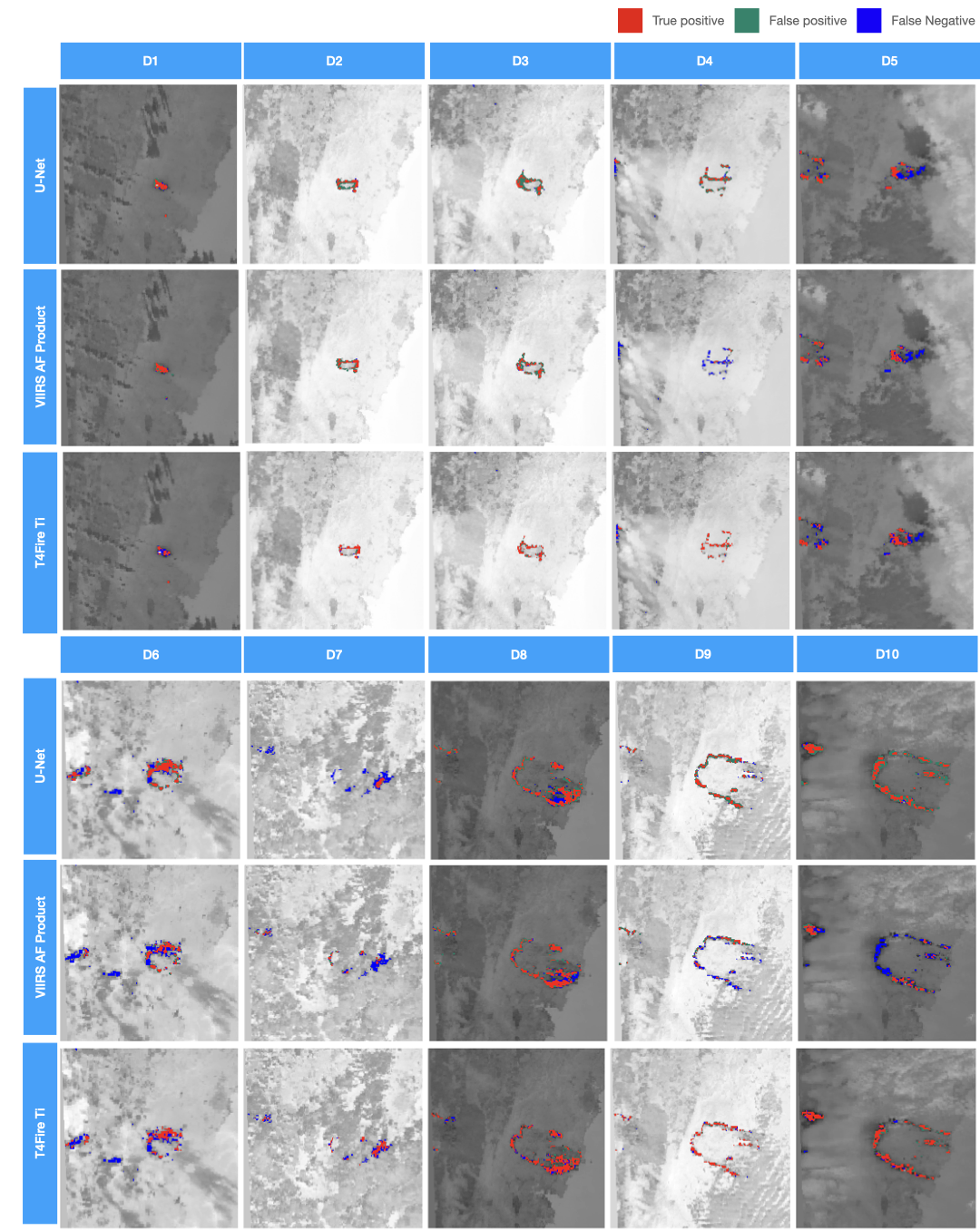Tokenized Time-Series in Satellite Image Segmentation with Transformer Network for Active Fire Detection
The spatial models are from repo: https://github.com/yingkaisha/keras-unet-collection
The original Transformer implementation are from repo: https://github.com/faustomorales/vit-keras
The Dataset Downloader is from repo: https://github.com/zhaoyutim/LowResSatellitesService
Link to the paper: DOI:10.1109/TGRS.2023.3287498
.
├── analysis # Analysis file for VIIRS Band I4 Data
├── data_processor # Data processor from VIIRS Geotiff to time-series and tokenized time-series
│ ├── main_dataset.py # Entry to generate time-series from VIIRS Geotiff
│ ├── PreprocessingService.py # Utils to read and write VIIRS Geotiff
│ ├── TokenizeProcessor.py # Google Earth Engine Client to download and process GEDI images
├── deployment # Essential steps for deployment to large regions
├── spatial_models # All the spatial models (ConvNet-based or Transformer-based) needed for the project
├── temporal_models # All the temporal models (RNN and Transformer-based) needed for the project
├── run_cnn_model.py # Main Entry to run spatial models
├── run_seq_model.py # Main Entry to run temporal models
└── README.md
The Visible Infrared Imaging Radiometer Suite (VIIRS) onboard the Suomi National Polar-orbiting Partnership (S-NPP) satellite has been used for the early detection and daily monitoring of active wildfires. How to effectively segment the ac- tive fire pixels from VIIRS image time-series in a reliable manner remains a challenge because of the low precision associated with high recall using automatic methods. For active fire detection, multi-criteria thresholding is often applied to both low-resolution and mid-resolution Earth observation images. Deep learning approaches based on Convolutional Neural Networks are also well-studied on mid-resolution images. However, ConvNet-based approaches have poor performance on low-resolution images because of the coarse spatial features. On the other hand, the high temporal resolution of VIIRS images highlights the potential of using sequential models for active fire detection. Transformer networks, a recent deep learning architecture based on self- attention, offer hope as they have shown strong performance on image segmentation and sequential modelling tasks within computer vision. In this research, we propose a Transformer- based solution to segment active fire pixels from the VIIRS time-series. The solution feeds a time-series of tokenized pixels into a Transformer network to identify active fire pixels at each timestamp and achieves a significantly higher F1-Score than prior approaches for active fires within the study areas in California, New Mexico, and Oregon in the US, and in British Columbia and Alberta in Canada, as well as in Australia and Sweden.
The Transformer model architecture is shown in figure above, it closely follows the design of the original encoder of the original Transformer and the Vision Transformer. The major difference to the ViT paper is that our input to the Transformer is a sequence of vectors representing one spatial location over time, as opposed to a sequence of image patches representing the different positions in one image. The pipeline for active fire classification has three high-level steps
- Tokenize the sequence of images into W H time-series, where each time-series is a sequence of tokens repre- senting one spatial location over time and each token is combined with an embedding of its temporal position in the time-series.
- Encode each time-series with a masked Transformer encoder and classify the pixel location at each time stamp with a layer of MLP as active fire or not.
- Obtain a final sequence of predictions for the original image sequence of active fire or not
The figure above provides a showcase in Currowan Fire, Sydney happend in 2019.
